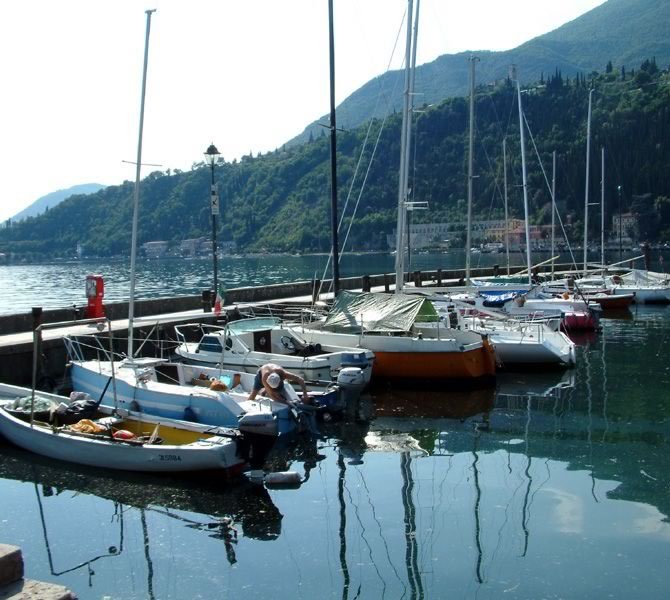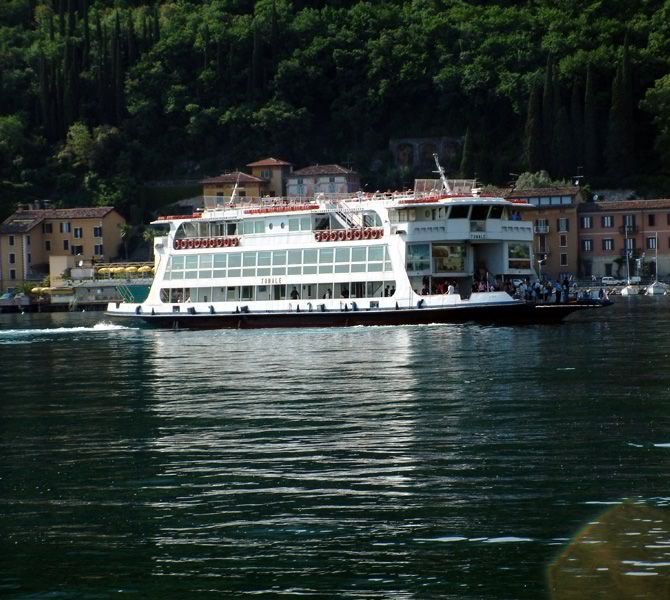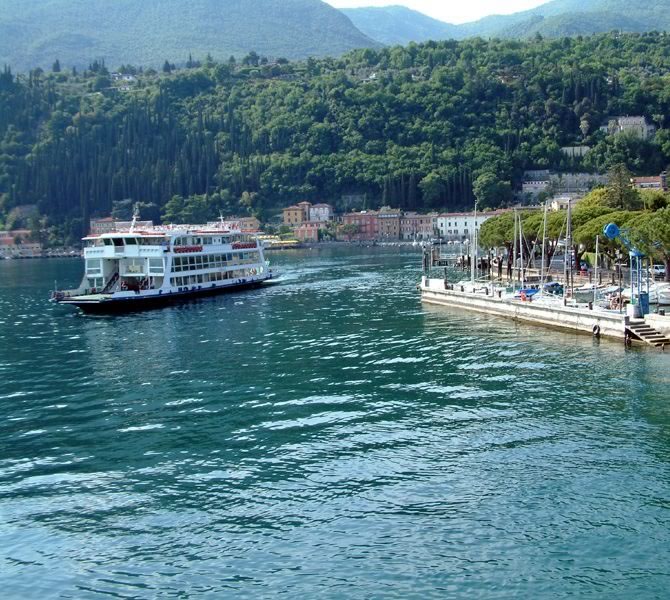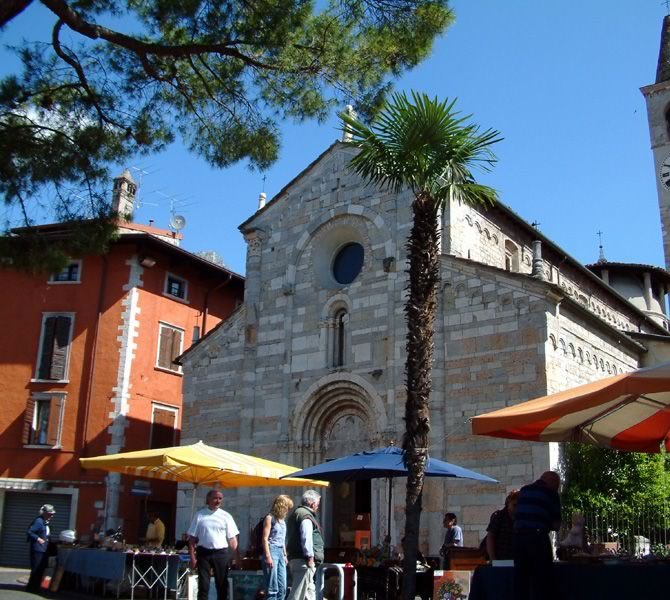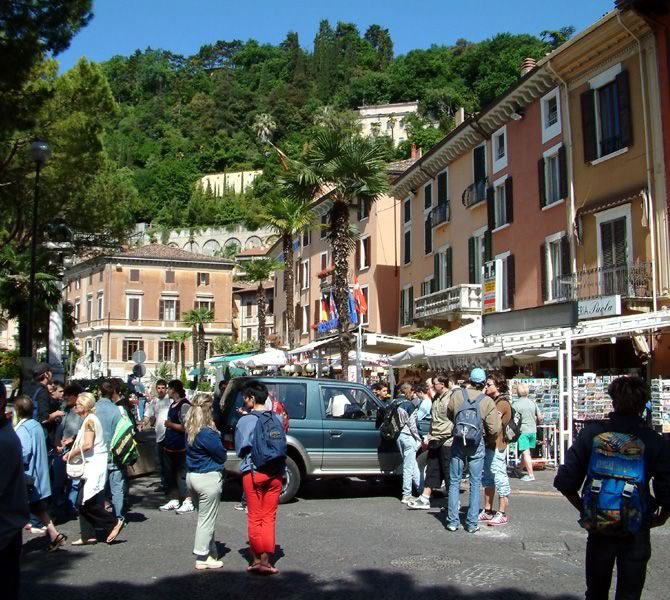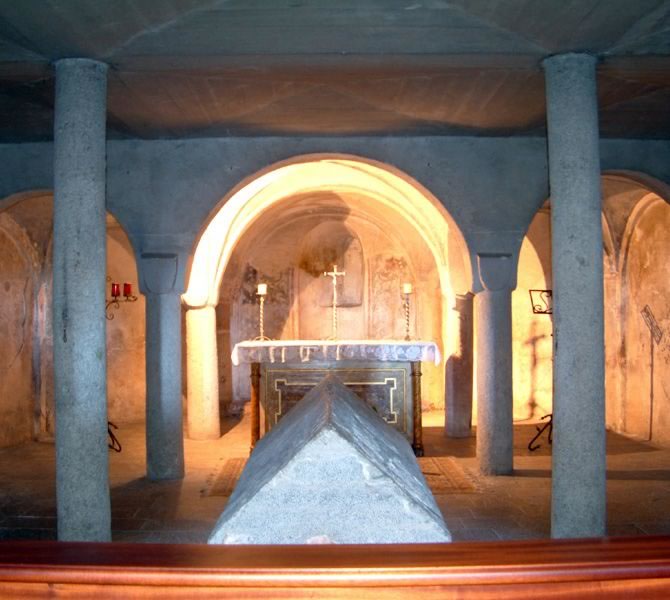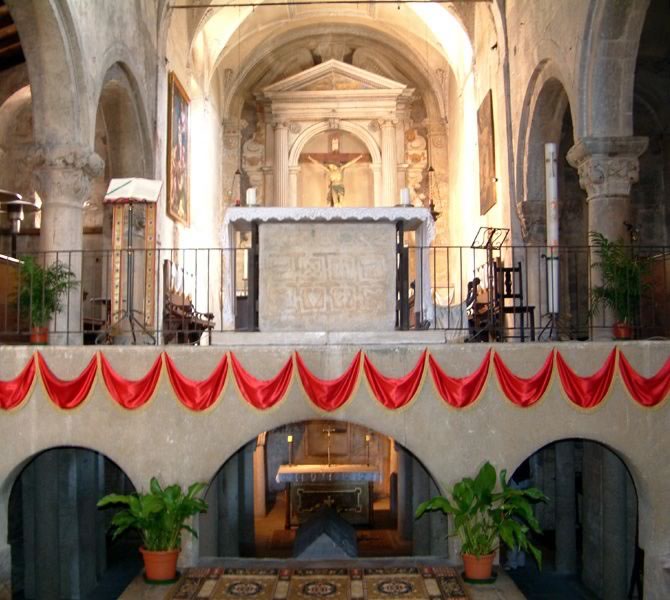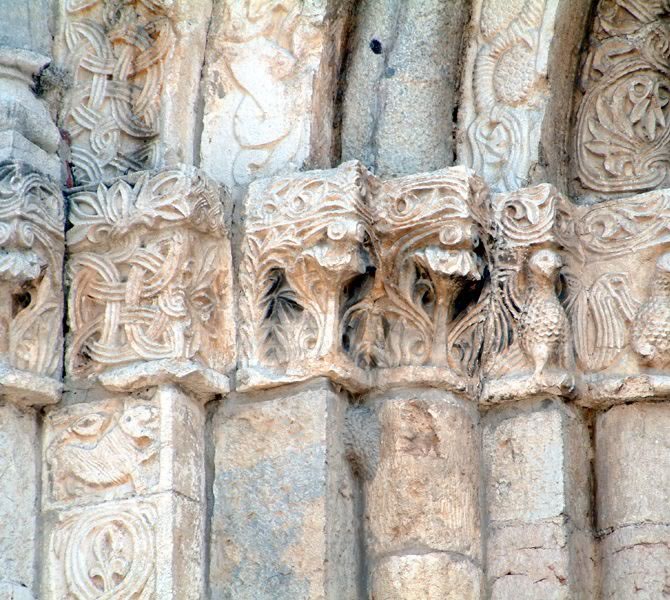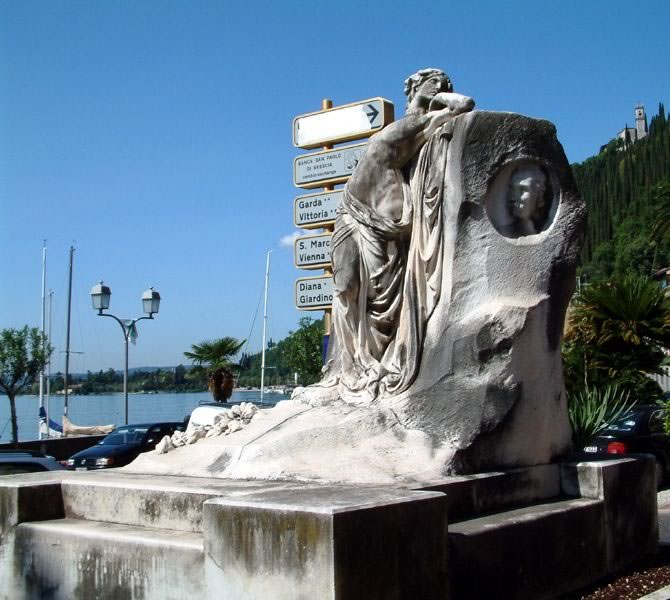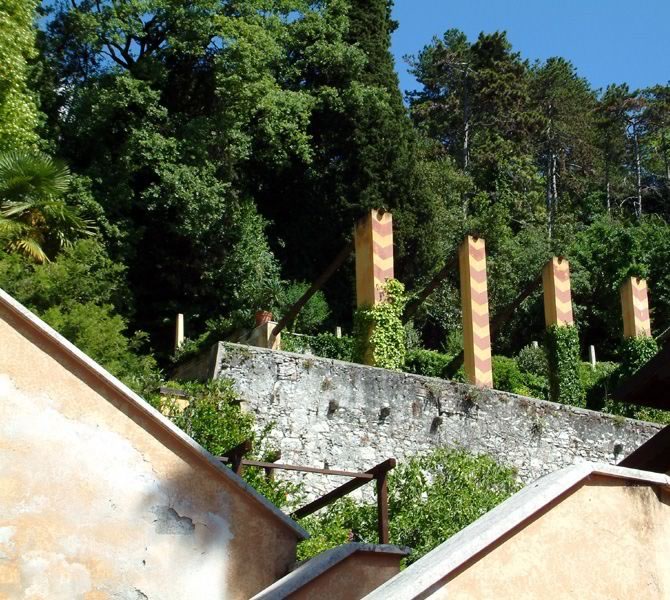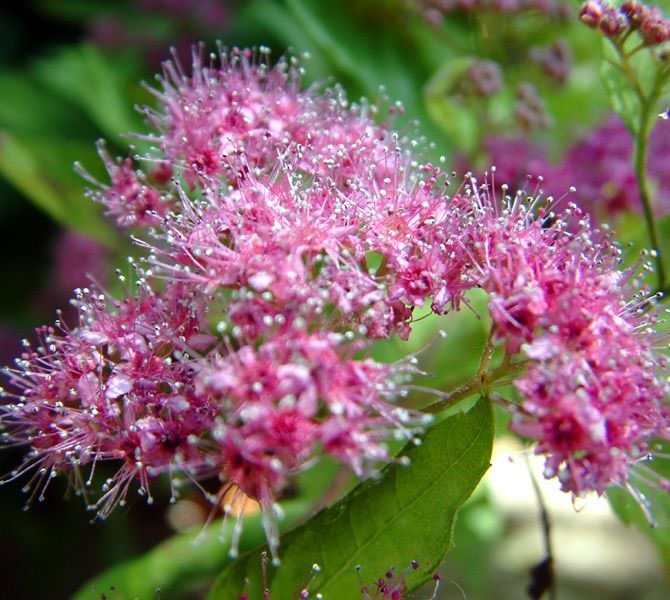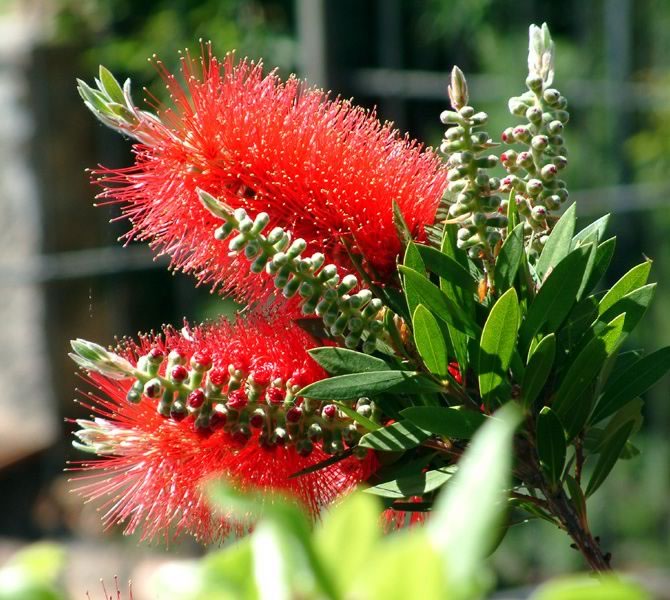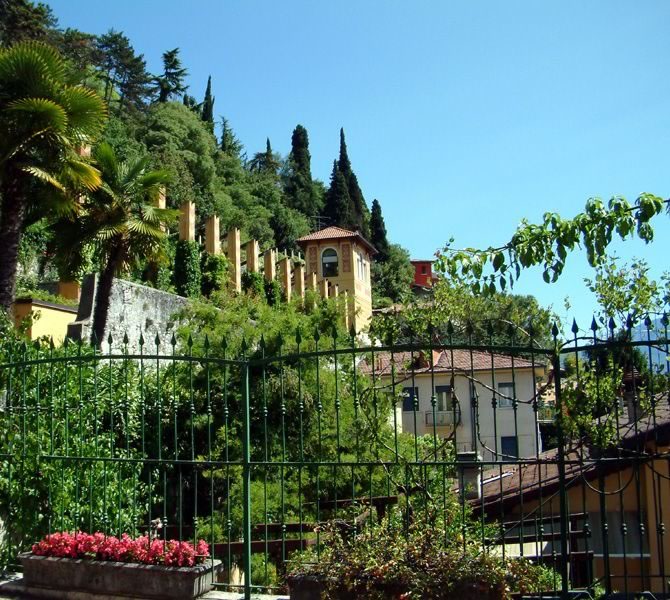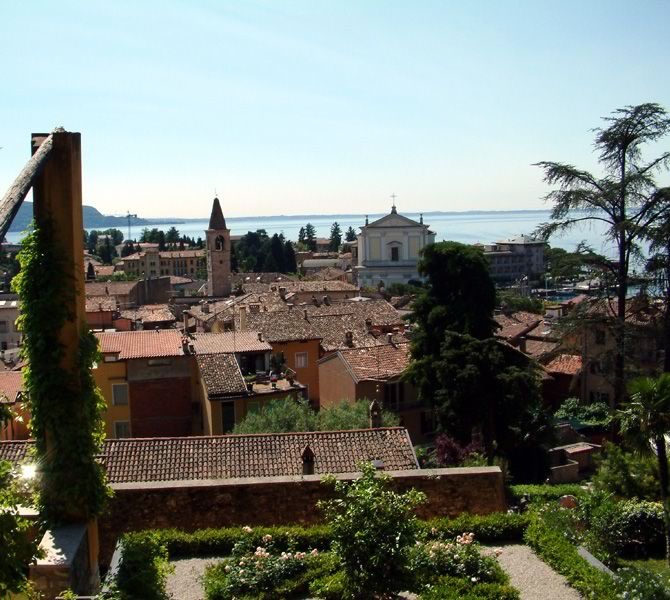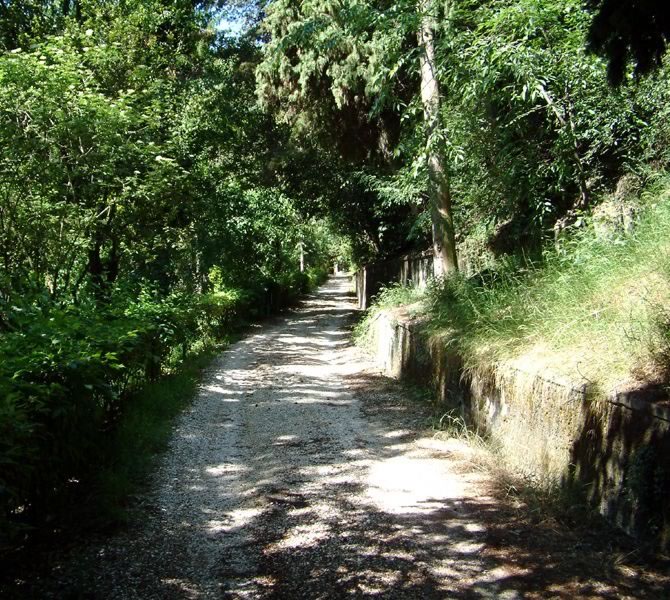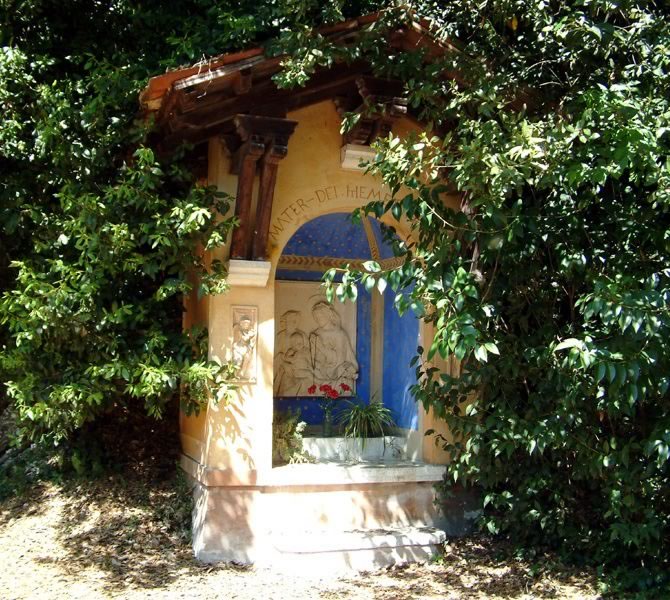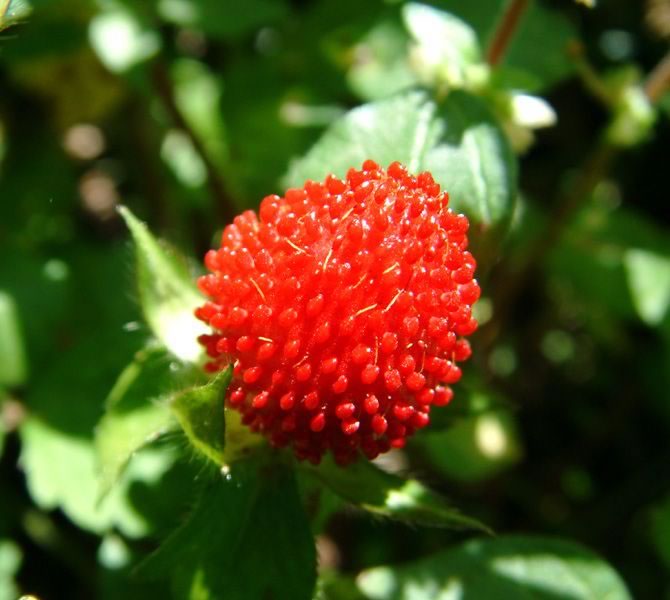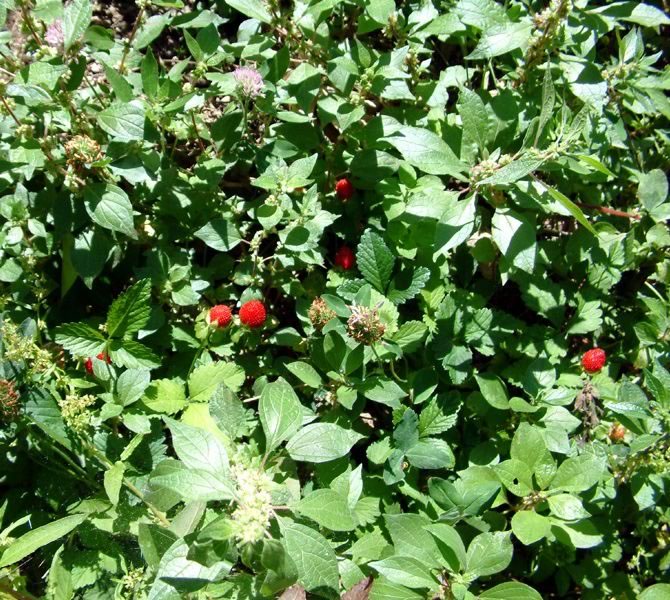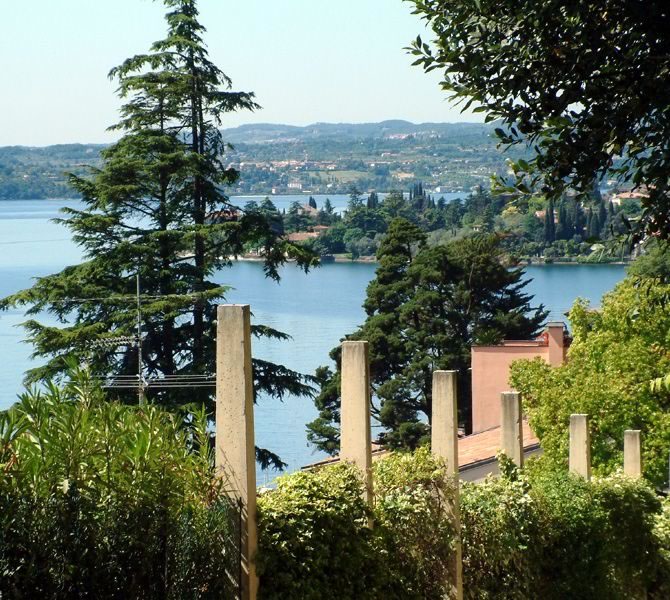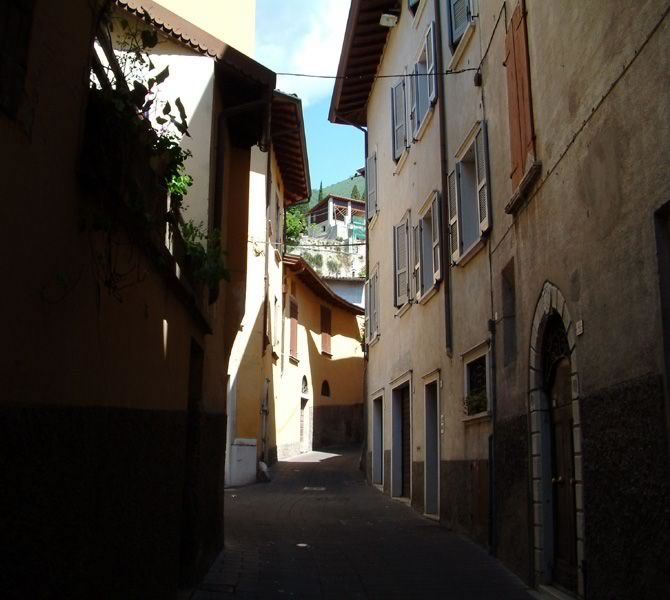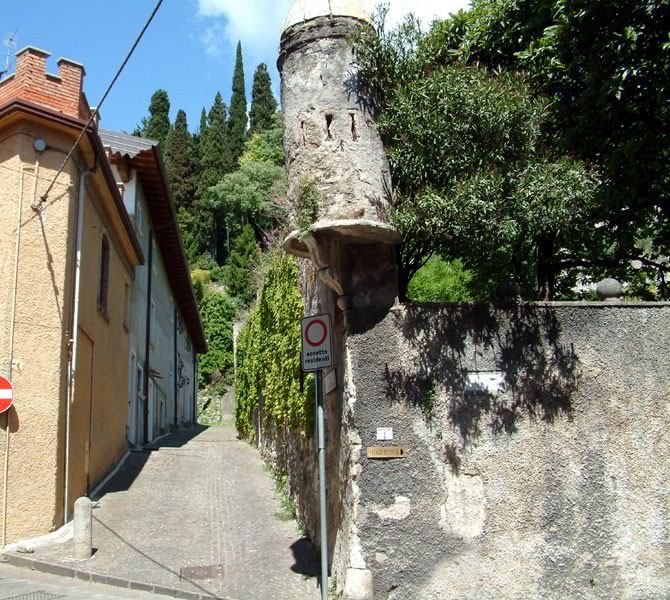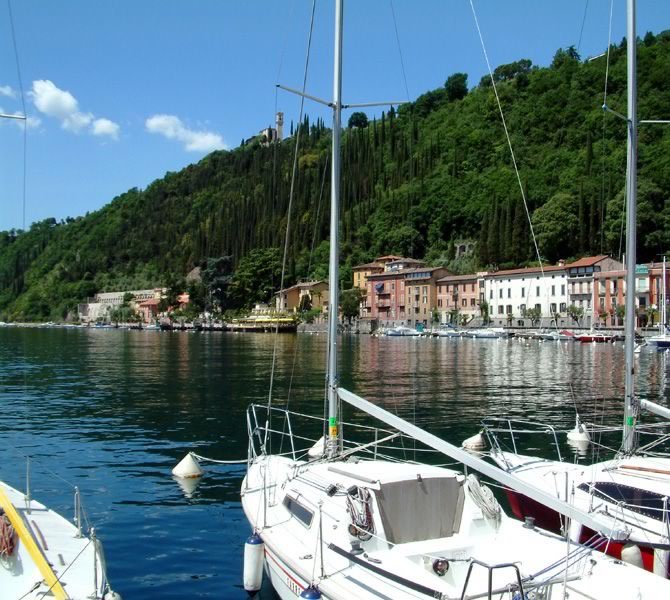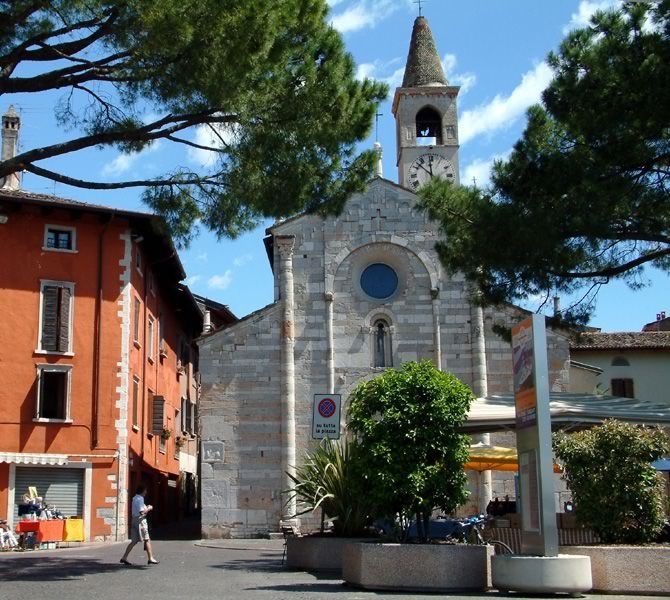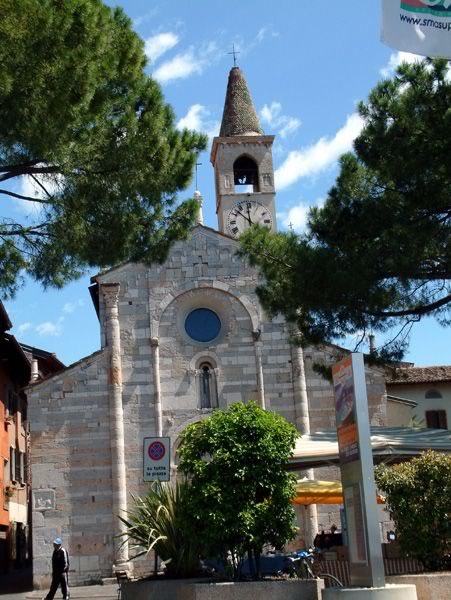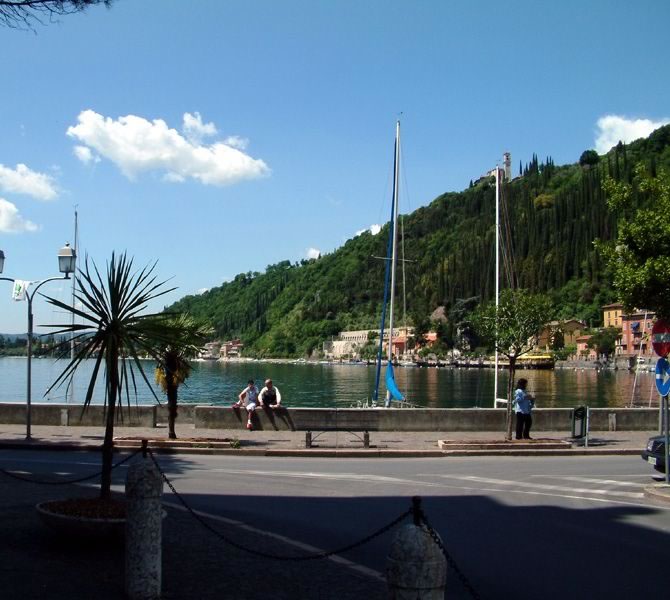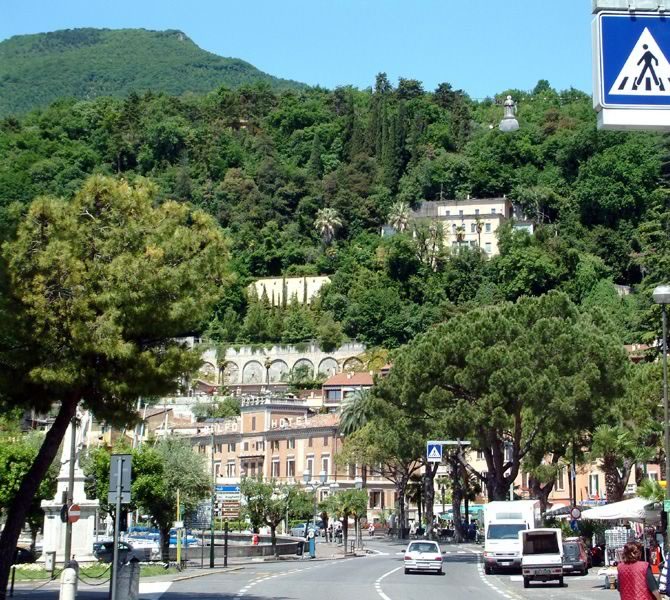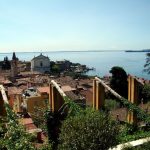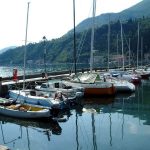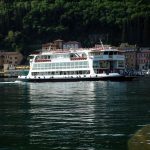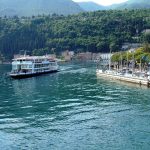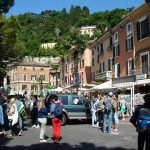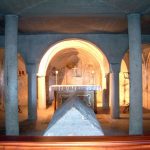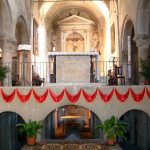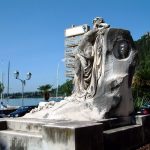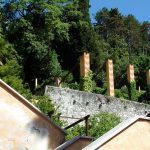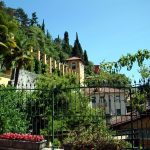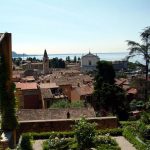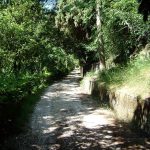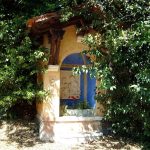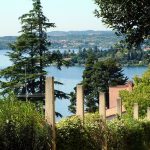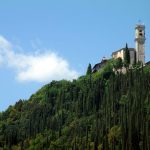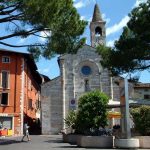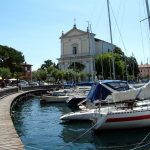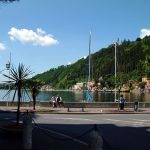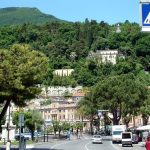Toscolano Maderno
HISTORY OF TOSCOLANO MADERNO
Once a time the whole territory of Toscolano Maderno was cultivated by lemon trees, today you can visit only the ruins of the earlier greenhouses, especially in the surroundings of Toscolano, while Maderno prevailingly has wonderful villas with large gardens of flowers, fruits and vegetables.
ARTS
The Parish of Toscolano, consecrated to the two saints San Pietro and San Paolo, was built in the 15th. century with its wonderful bell tower, edified in 1727. Inside it keeps 22 precious pieces by Andrea Celesti, called “Tritico” (1688), representing life stories of the two saints. Very interesting are the chorus and the majestic high altar in constructed precious walnut (1612). Behind the parish church, rises the pilgrimage “Santuario della Madonna di Benaco” of the 15th. century. According to a legend, its name derives from the fact, that for the building they used lapidary material of a mysterious town called BENACUS, destroyed in 243 by a terrible earthquake. During several excavations, really they found a Roman oppidium nearby Toscolano, ruins of a palace, which belonged to the so-called Nonii-Arii Family, that villa was recognized on ancient paintings. The two red marble columns at the entrance of the church should be remains of the mysterious palace.
The town around the ancient port is “framed” by majestic palaces: House number 26, an occupied villa, derives from the 16th. century and belonged to the printer Paganino Paganini, House number 53 was the summer residence of the noble family “Delai”, they produced anchors and nave chains in order to the government of Venice “La Serenissima”. The villa has wonderful greenhouses with lemon trees. Very interesting “Palazzo Comboni” (18th. century) with its wonderful terraced park to the lake and the ancient public garden. Not far away you can find out the famous paper factory “La Cartiera di Toscolano”. At the beginning of the 16th. century there was built a magnificent palace “Palazzo Nuovo” ordered by the Duke of Mantova, but his family stayed there only for a few time. Today the Gonzaga Family possesses Villa Lucia or better known like “Palazzo Bulgheroni”, with a characteristic staircase with two ramps. But the most important historical monument of Maderno is its Romanesque church “Sant’Andrea”, situated nearby the sea promenade and constructed in the 12th. century. It is divided in three naves, the “crypta” was built later, in the 15th. century. Pulled into the solid walls, you can find Romanesque tombstones; inside the church keeps a Romanesque tomb with the inscription: “Caasia Festa, 40 A.D.”. The bishop “Cardinal Borromeo”, during his stay at Maderno in 1580, ordered to decorate this “sarcofago” with relieves and other inscriptions. The beautiful bell tower was edified in 1469 and completely restored in 1602.
ATTRACTIONS
La Valle delle Cartiere
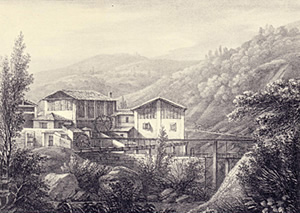 Today only a walk along the remains of buildings and factories, but this valley once a time was the beating heart, the core of trading, producing and merchandising “paper”. In 1381 they built the first paper mills, followed by several little factories, their engines were powered by the river Toscolano. Pieces of cloth were pressed and milled to a fine powder, and with that “pie of powder”, water and some secret ingredients the “maestri” produced long thin sheets of paper. That paper was used in central Italy for all official documents, moreover the factories exported their material all over Europe, even to the Orient. Till the middle of the 18th. century Toscolano remained exclusive supplier of paper for whole Italy. Naturally the production of paper attracted many printing shops. In 1478 indeed, there was printed Italy’s first book,the printer Gabriele di Pietro from Messaga di Toscolano published his first grammar book “Donatus pro puerulis”, then Paganino Paganini built his printing shop in that valley, his labours were in demand, because he used many special arts of printing with different writing characters.
Today only a walk along the remains of buildings and factories, but this valley once a time was the beating heart, the core of trading, producing and merchandising “paper”. In 1381 they built the first paper mills, followed by several little factories, their engines were powered by the river Toscolano. Pieces of cloth were pressed and milled to a fine powder, and with that “pie of powder”, water and some secret ingredients the “maestri” produced long thin sheets of paper. That paper was used in central Italy for all official documents, moreover the factories exported their material all over Europe, even to the Orient. Till the middle of the 18th. century Toscolano remained exclusive supplier of paper for whole Italy. Naturally the production of paper attracted many printing shops. In 1478 indeed, there was printed Italy’s first book,the printer Gabriele di Pietro from Messaga di Toscolano published his first grammar book “Donatus pro puerulis”, then Paganino Paganini built his printing shop in that valley, his labours were in demand, because he used many special arts of printing with different writing characters.
The actual parish church of the 18th. century was built on ruins of an ancient castle, destroyed in the 17th. century by a terrible fire, remaining only one tower, today bell tower of the church. The construction of the temple finished in 1825, keeping inside the famous bones of the saint “Sant’Ercolano”, the saint patron of Maderno and the whole West Riviera of Lake Garda. A legend tells, that after the death of Sant’Ercolano no town agreed to bury the corpse. Therefore the corpse was laid on a little boat without rudder, driving on Lake Garda. After some time the little boat was fond at the coast of Maderno, interpreted by the inhabitants like a religious sign, so they buried the bones in the parish church. Inside the temple keeps masterpieces by Paolo Veronese (1528-1588) and Francesco Bassano (1470 – 1540), the pipe organ was constructed in 1825 by Damiano Damiani. From the centre you can extinguish the little church of Maclino, high up in the mountains. Two other ancient hamlets are Vigole and Sancio, rising on “Montemaderno”, at the foot of Monte Pizzocolo, nowadays gladly visited by walkers and mountain-bikers. Maderno is connected with Torri del Benaco by an active ferry boat service, transporting not only persons but cars and even busses. It takes about 20 minutes to cross the lake, an easy way to reach the other coast of Lake Garda.

